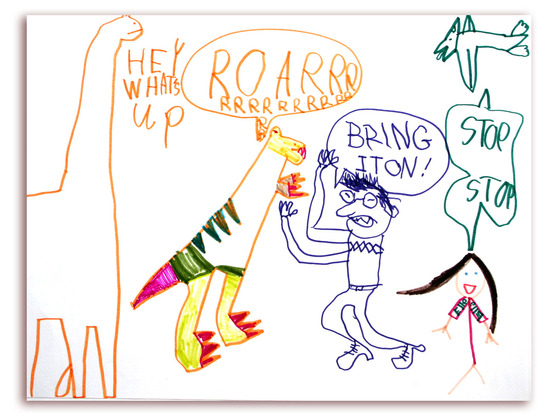Native American Incubator
/This week, Alphachimp was honored to play a small role in a two-day marketing and branding workshop, held in Window Rock, Arizona, capital of the Navajo People.
Read MoreThis week, Alphachimp was honored to play a small role in a two-day marketing and branding workshop, held in Window Rock, Arizona, capital of the Navajo People.
Read More
In preparation for a major industry convention, Nashville-based start-up Management Signals needed a short, clean explaination of their business.
The resulting animation, created in collaboration with their management team, quickly describes the value of their services: leveraging mobile devices, gaming, and cloud computing for business intelligence.
Our tour guide points to a nightclub with a brown awning and the windows sealed up with cinderblocks.
He points as we roll by in the minivan. "That's where a lot of things start that end up with someone getting shot."
After scanning the intersection, he slowly turns right. "The nightclub and the high school, stuff starts in those two places and ends up getting finished in the street."
Our guide is a "violence interrupter" for Cease Fire.
For those of you interested in how the collaborative design process can be used to change our nation's consumption of energy...
The Energy ThinkIn was hosted in San Francisco on October 27th by frog design and the SmartGrid Consumer Collaborative (SGCC).
 "Designer vs. Dinosaur" by Lillian (6) and Peter (40)
"Designer vs. Dinosaur" by Lillian (6) and Peter (40)
Robert "Fabi G" Fabricant is inspiring jealousy (in me) by being in East Africa, blogging, and hobnobbing with the globally challenged superheroes and villains at the World Economic Forum.
His observations in his Fast Company post examine the long shadow cast by the rise of Design Thinking.
Specifically, Fabricant calls out the dirty little secret that designers--while clever, innovative and unafraid of funky footwear--don't actually know how to get stuff done within complex systems.
Kaizen (改善) means "improvement" — "kai" (改) means change/make better, and "zen" (善) means good — but as the term is used as a business process it more closely resembles in English “continuous improvement.”
Kaizen is one of the keys to the steady improvement and innovation found at successful companies in Japan such as Toyota. Says Matthew May, in his book The Elegant Solution: Toyota’s Formula for Mastering Innovation, “Kaizen is one of those magical concepts that is at once a philosophy, a principle, a practice, and a tool.”
Though Kaizen is a tool used by corporations to achieve greater innovation, productivity, and general excellence, it’s also an approach, an approach that we can learn from and apply to our own lives as we strive for continuous improvement on a more personal level. We can call this “Personal Kaizen.” Others have applied the personal kaizen approach to personal efficiency or GTD. You too can take the spirit of kaizen and apply it to your own unique personal kaizen approach to improve — step-by-step, little-by-little — your design mindfulness, knowledge, and skill. READ MORE >>

When A.G. Lafley was named CEO of Procter & Gamble during the summer of 2000, her job was remarkably ambitious: Make innovation happen at P&G.
To remain the world's preeminent maker of useful stuff for the house, P&G needed to make a lot of changes very quickly and appointed Claudia Kotchka as the company's first-ever VP for design strategy and innovation in 2002.
Her job was remarkably ambitious: Make innovation happen at P&G!
And she did through up-endeding the status quo in P&G's product development process. She made several bold moves that any company may want to consider.
From Flowingdata.com:

You know all those infographics that you like so much fromGOOD Magazine? Well they're all in one place now in their Flickr archive. Head on over to view all 80.

How the Bloomberg Administration's push for design is changing the face of New York. A Conversation with First Deputy Mayor Patricia E. Harris.
Alphachimp LLC is a visual learning company based in Houston, Texas.
Through drawings, animations, and the design-thinking process we help people understand complex situations and make better decisions.
We provide a cluster of inter-related services in the area of visual learning, graphic facilitation, problem-solving, and innovation.
COPYRIGHT © 2022 ALPHACHIMP, LLC
ALPHACHIMP® and ROCKSTAR SCRIBE® and DOODLES IN MOTION® are registered in the U.S. Patent and Trademark Office.